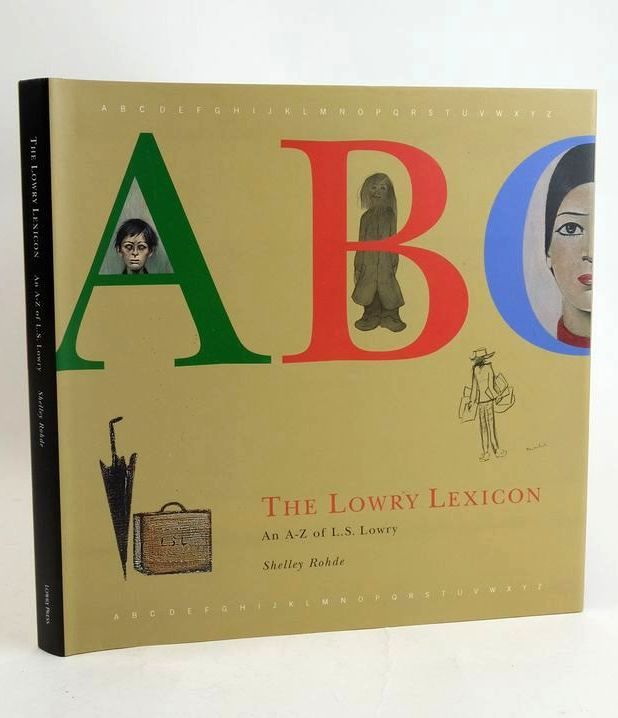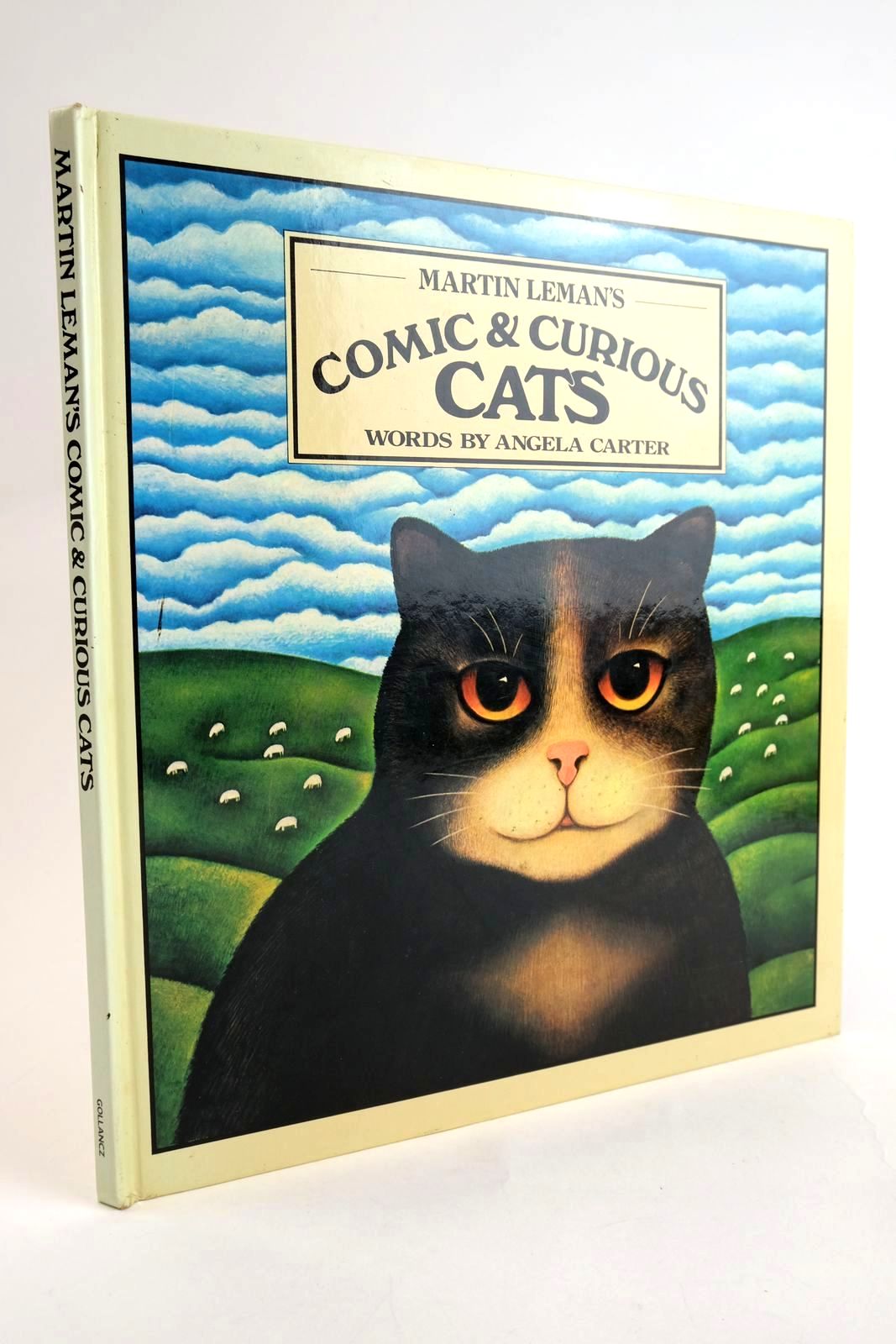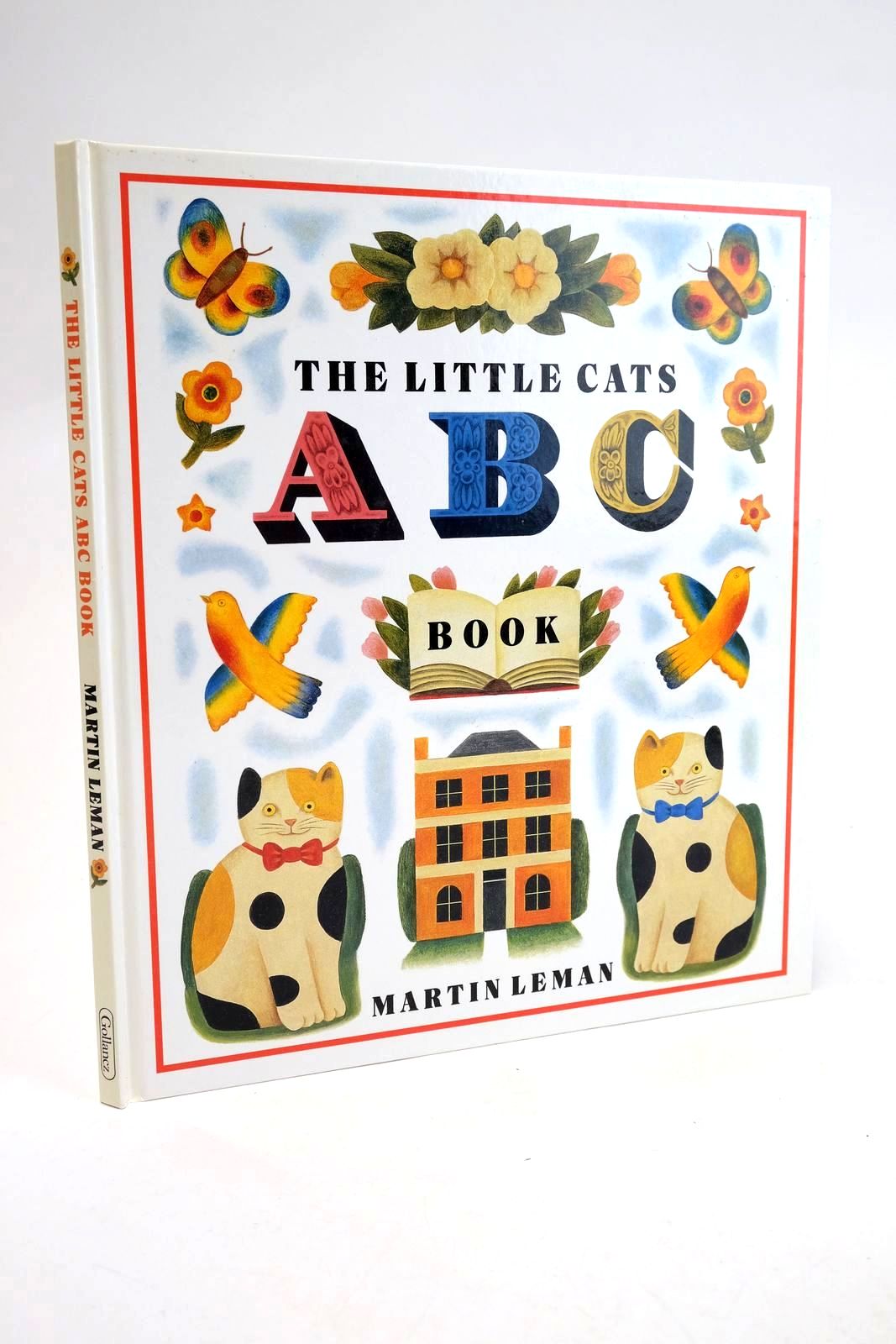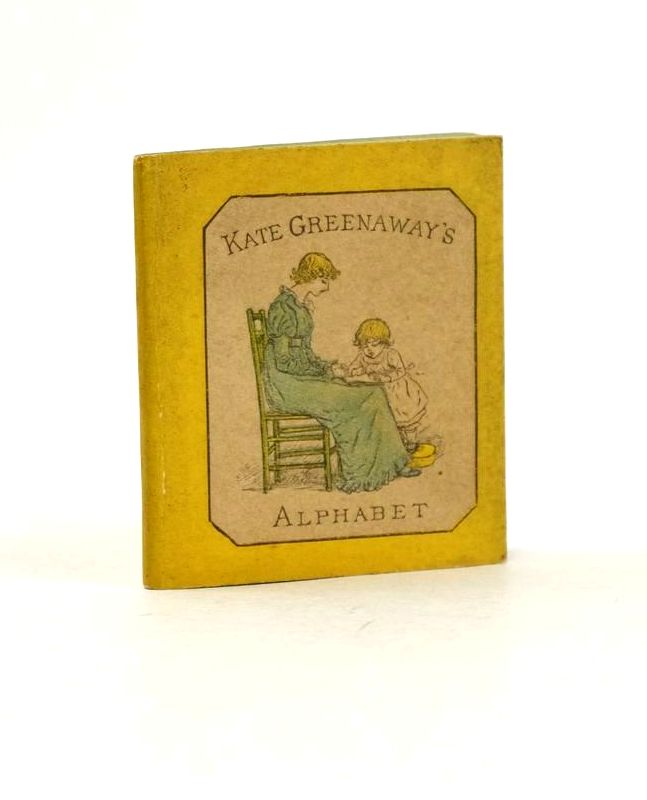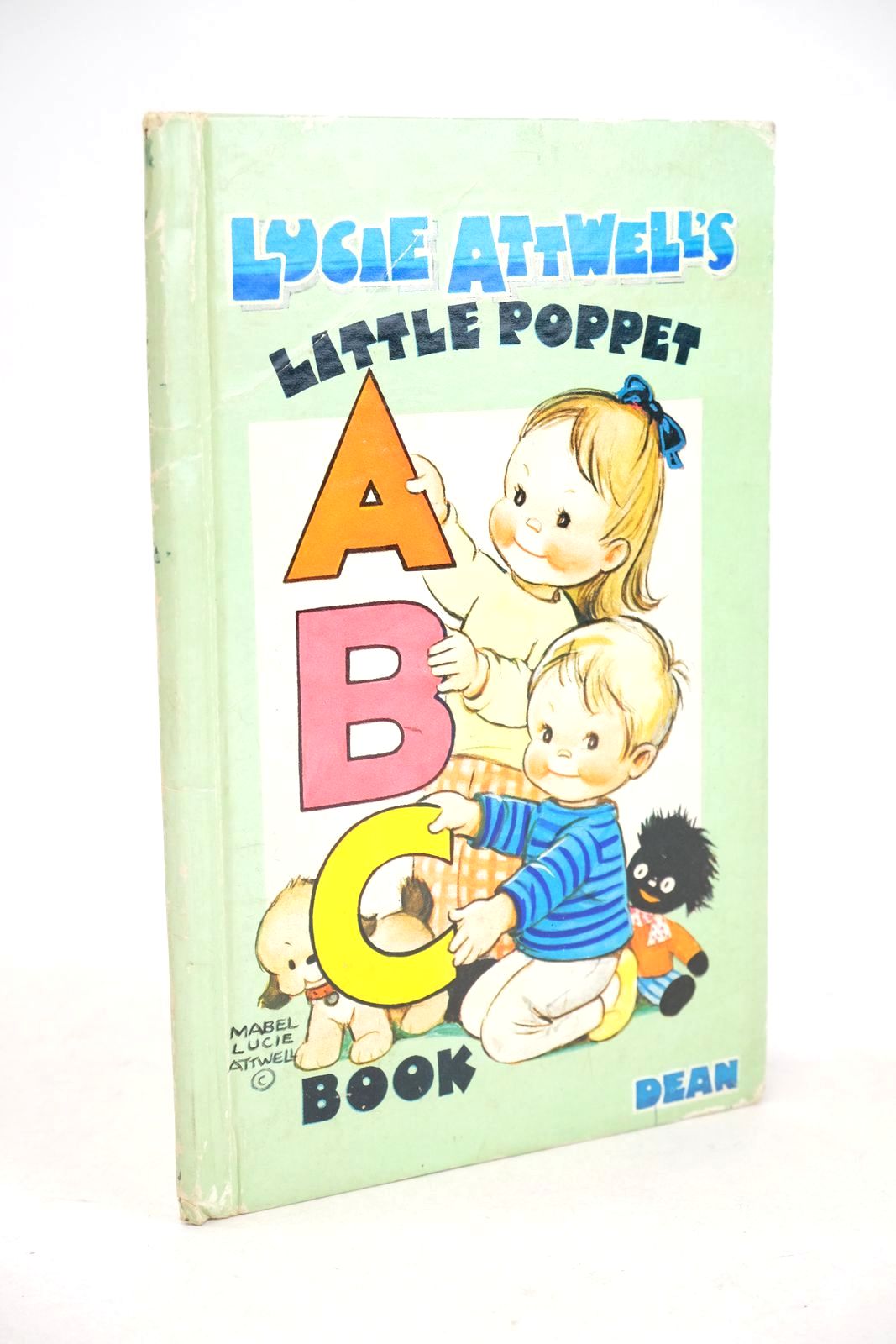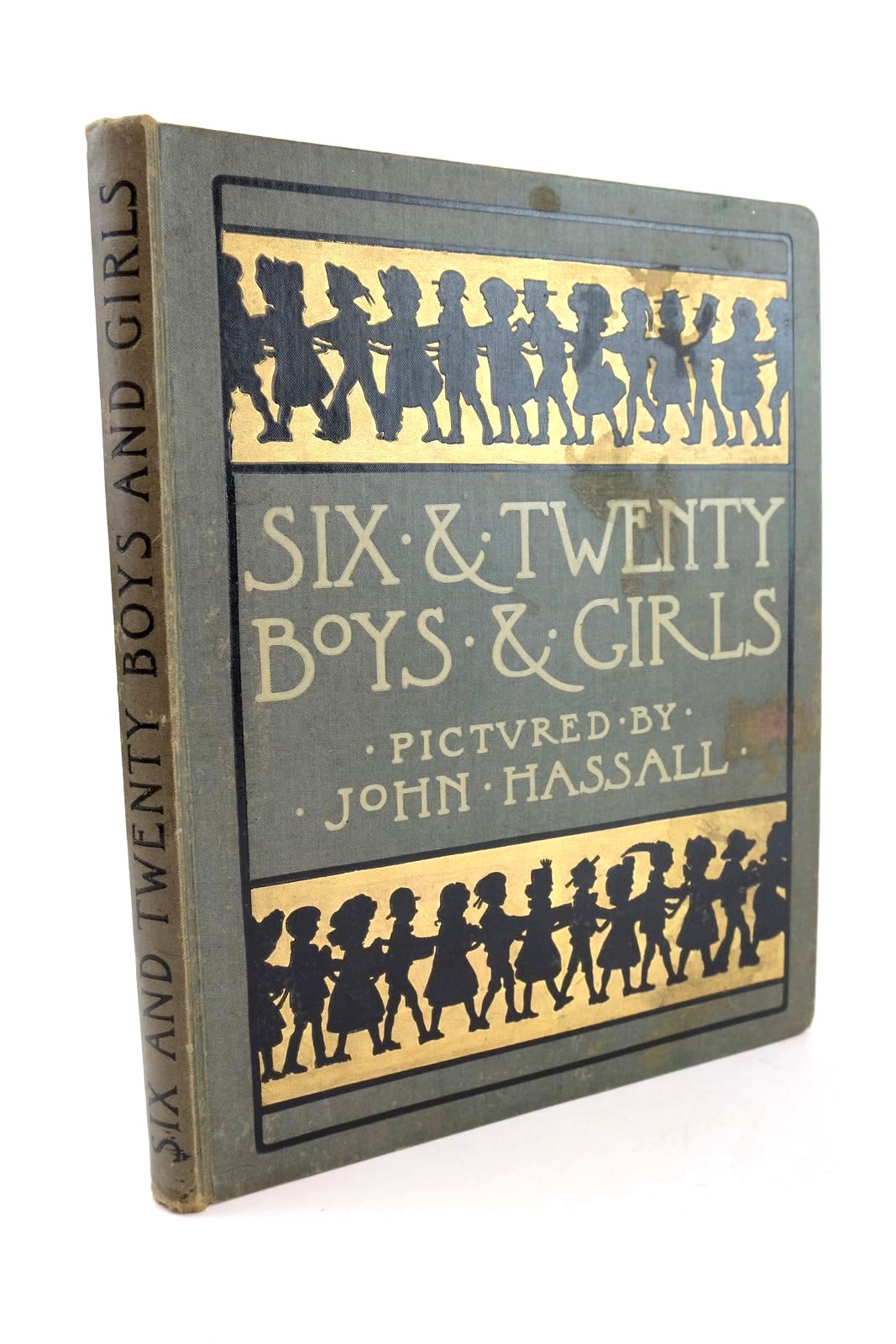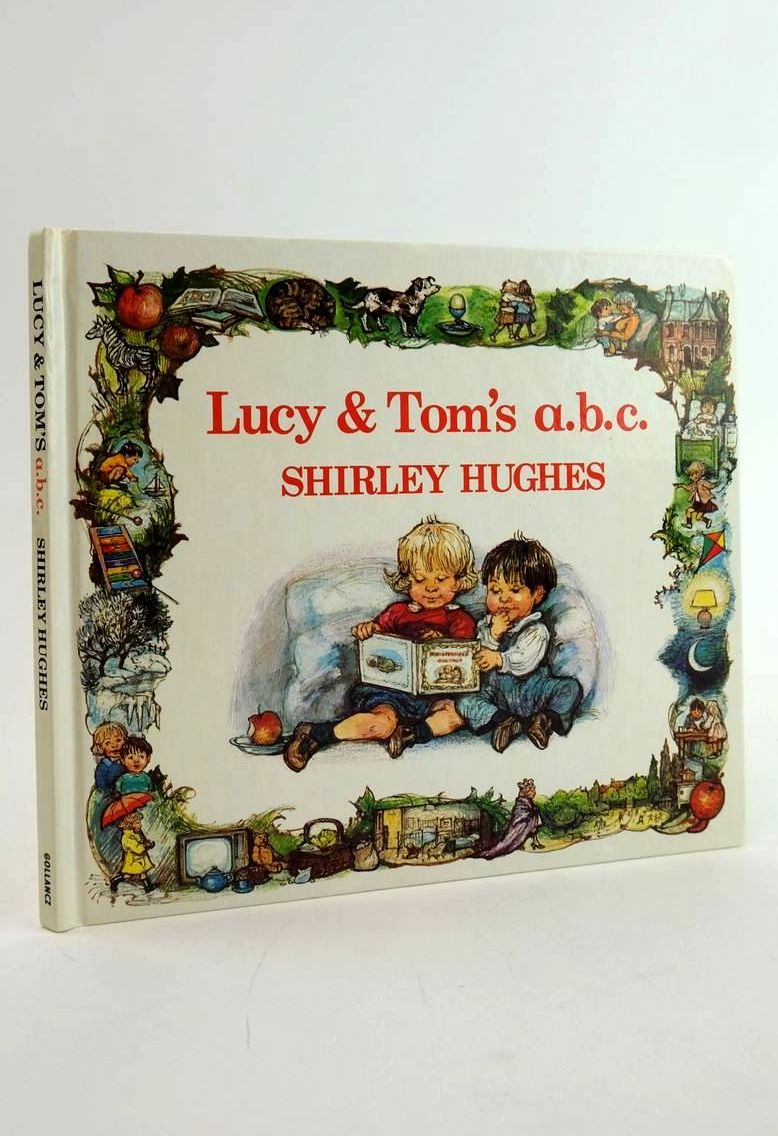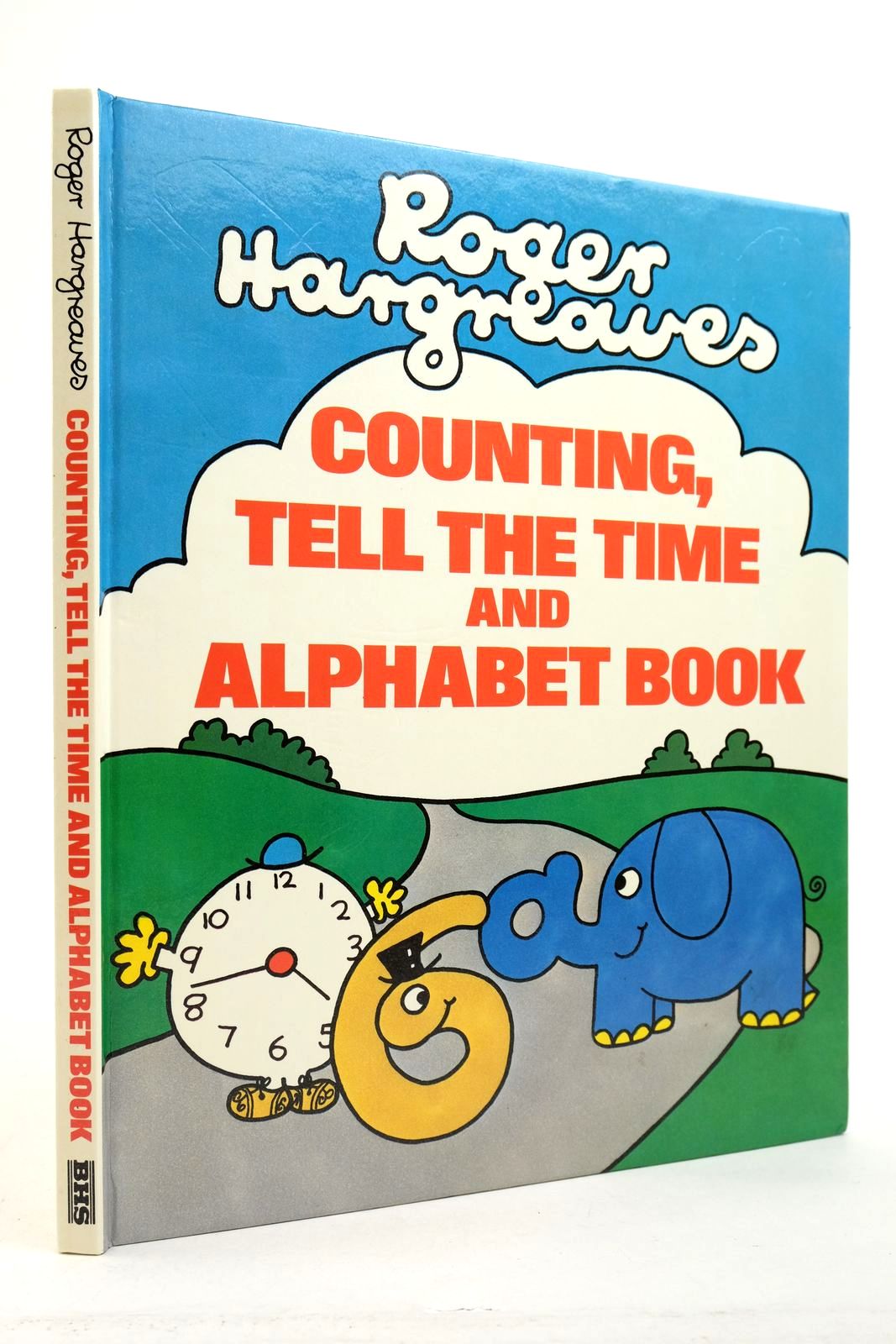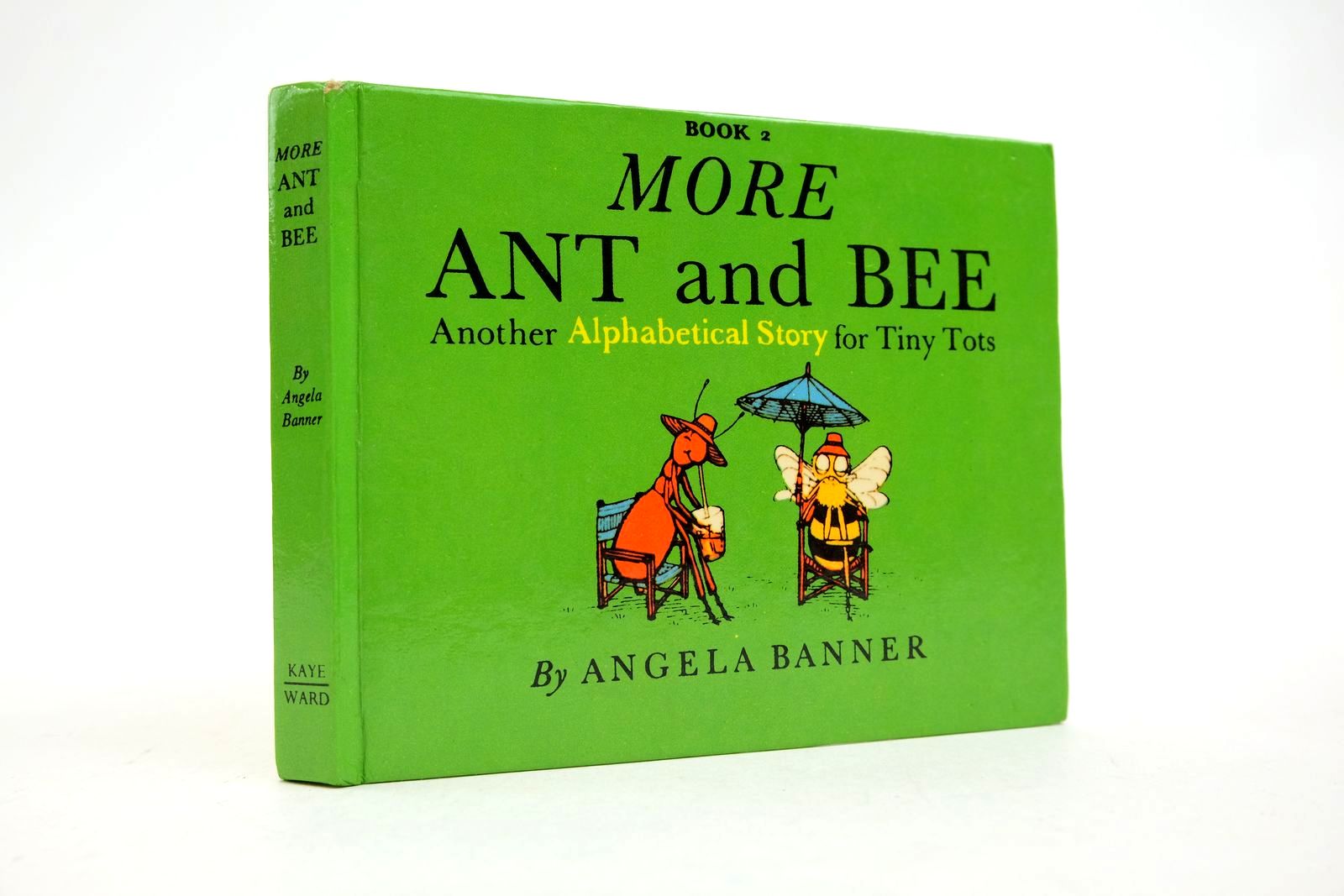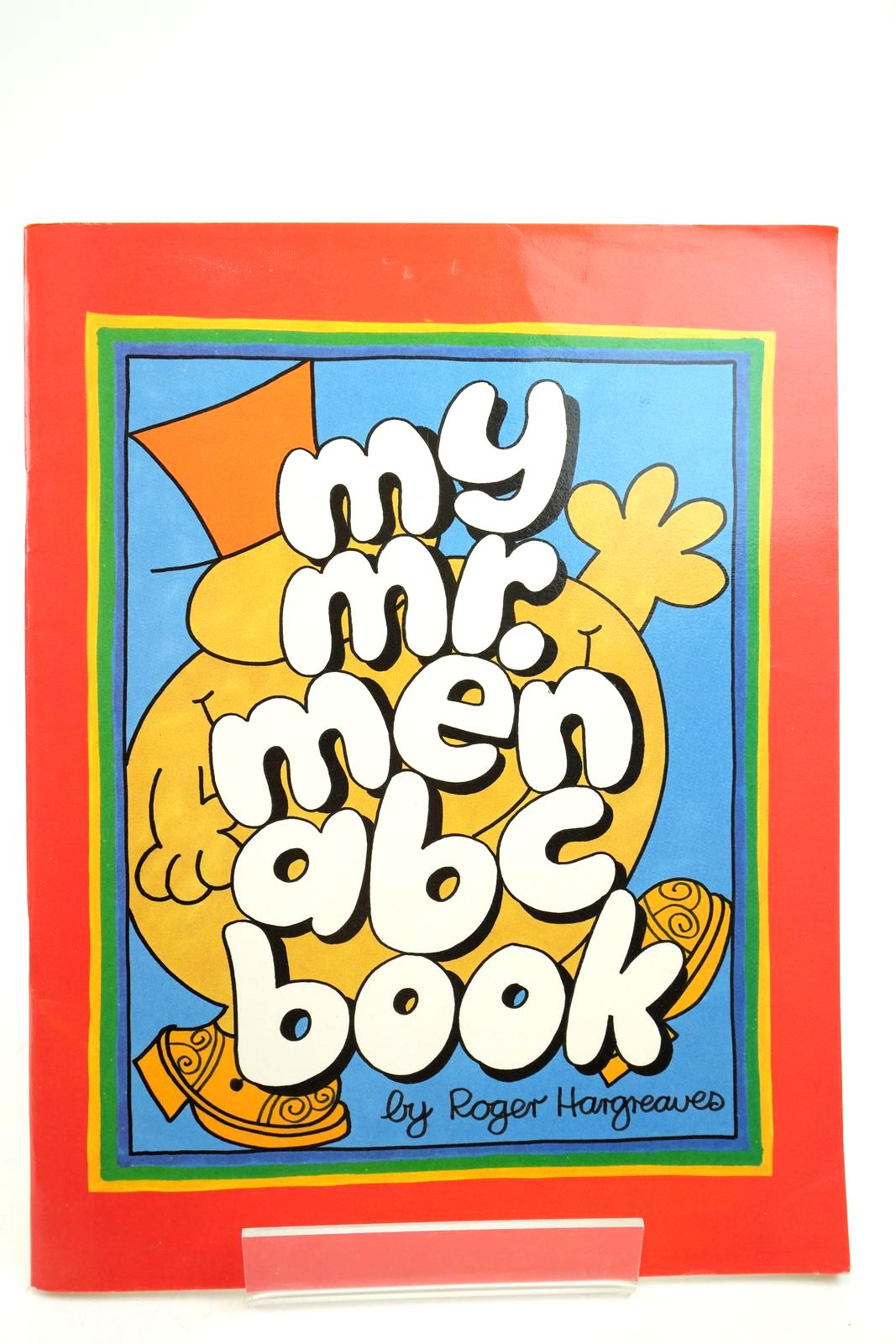ABC - A History of Alphabet Books
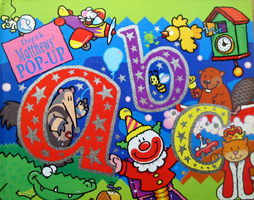 Alphabet books - what are they? They are books that are created for younger readers, which show the letters of the alphabet, along with related words and/or pictures that usually begin with the given letter. Sometimes rhymes or just single sentences will be used to highlight the letter being learnt. Many ABC books will feature the letters in upper and lower case, to help the child recognize that they represent the same thing.
Alphabet books - what are they? They are books that are created for younger readers, which show the letters of the alphabet, along with related words and/or pictures that usually begin with the given letter. Sometimes rhymes or just single sentences will be used to highlight the letter being learnt. Many ABC books will feature the letters in upper and lower case, to help the child recognize that they represent the same thing.
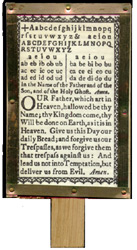 Available today in plentiful supply and variety, what are the origins of what we now know as 'Alphabet' or 'ABC' books? Join me, as I take a look!
Available today in plentiful supply and variety, what are the origins of what we now know as 'Alphabet' or 'ABC' books? Join me, as I take a look!
Hornbooks:
Hornbooks first appeared in the 15 th century in Europe and America, and were the earliest means of teaching children the alphabet and helping them to learn to read. Despite its name, hornbooks were not like the books we are familiar with today. They were constructed from a wooden paddle with a handle. A learning parchment would be put onto the paddle and covered with very thin piece of cow's horn (hence their name!). The cow's horn would protect the parchment from damage and soiling, thus extending its life.
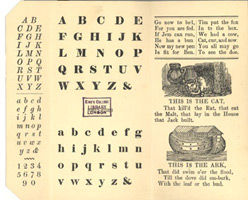 The parchment would show the letters of the alphabet written in capital and lower case forms, a syllabary (a combination of vowels and consonants that taught correct pronunciations, which would later be used in reading longer words) and very often the Lord's Prayer, or another common religious verse. The Lord's Prayer would be something that would be familiar to the majority of children at the time, even before they learnt to read. This being the case, they could see in written form the words that they were used to speaking and hearing, so aiding quicker learning.
The parchment would show the letters of the alphabet written in capital and lower case forms, a syllabary (a combination of vowels and consonants that taught correct pronunciations, which would later be used in reading longer words) and very often the Lord's Prayer, or another common religious verse. The Lord's Prayer would be something that would be familiar to the majority of children at the time, even before they learnt to read. This being the case, they could see in written form the words that they were used to speaking and hearing, so aiding quicker learning.
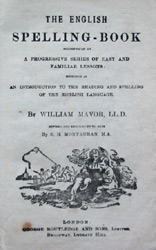 As time progressed, more elaborate and expensive hornbooks were made. Some were made out of metal, silver and even ivory. Quite a novel hornbook would be made out of gingerbread - with each letter the child learnt, a reward of a gingerbread letter would await them - a definite incentive for quick and thorough learning!
As time progressed, more elaborate and expensive hornbooks were made. Some were made out of metal, silver and even ivory. Quite a novel hornbook would be made out of gingerbread - with each letter the child learnt, a reward of a gingerbread letter would await them - a definite incentive for quick and thorough learning!
Hornbooks were used as a teaching tool for several hundred years, until their successor, the battledore, came along.
Battledores:
 First appearing in the mid to late 1700's, but made popular during the 1800's, the battledore was a progression of the hornbook. Printed on thin cardboard, the majority of battledores were folded into three. Printed on the cardboard was the alphabet; similar to the hornbook in that it would have both capital and lower case letters, but different in that very often the letters would be mixed up, so as to help with differentiation and to help test the child's knowledge.
First appearing in the mid to late 1700's, but made popular during the 1800's, the battledore was a progression of the hornbook. Printed on thin cardboard, the majority of battledores were folded into three. Printed on the cardboard was the alphabet; similar to the hornbook in that it would have both capital and lower case letters, but different in that very often the letters would be mixed up, so as to help with differentiation and to help test the child's knowledge.
Battledores would also still incorporate syllable or phonics lessons. However, there were some more differences in the content. Due to extra space sometimes a short story was incorporated instead of, or as well as, a prayer. Short word lists were also used. A big difference in the battledores compared with the hornbooks was the use of illustrations. These illustrations depicted objects and scenes that would be familiar to the children of the time. Pictures, and sometimes story content and lay-out, would vary depending on the printer. Battledores were still being published well into the 18th century.
Primers, readers and spellers:
Further progressions from hornbooks and battledores were primers, readers and spellers. Different in format these were more like the book that we know today, with several printed paper pages and a protective covering around the sheets. However, the common themes throughout these books remained the same. The alphabet, lists of syllables and commonly used words, Biblical texts and stories with a Christian or moral message were still the order of the day.
It was during the mid-19th century that primers saw a change in direction, with previously very religious primers converting to more modern themes. Common animals and household objects were more readily used to introduce children to letters and numbers.
An example of one of these later ABC spellers can be seen in the book 'The English Spelling Book'. Subtitled: "Accompanied by a progressive series of easy and familiar lessons: intended as an introduction to the reading and spelling of the English language". This book incorporates the English alphabet in upper and lower case letters, with mainly animal illustrations; syllables of 2 letters, words not exceeding 6 letters; lessons of 1 syllable; 2 syllables etc. The book also includes different pronunciation, advice to young persons, lessons on grammar and also lessons on the Kings of England and arithmetic.
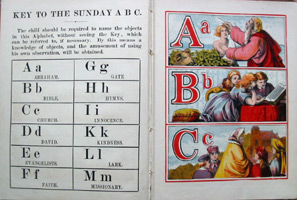 More modern ABC books:
More modern ABC books:
With the increase of better printing and binding facilities, ABC books during the latter part of the 19th century became more widely written and published. Some books still liked to use biblical references, but these were a far cry from the very religious ABC books that had preceded them. However, many of the later ABC books still had stories or verses with a moral value to them.
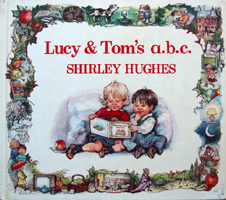 During this period the ABC books became more diverse, especially with the illustrations that they included. Many famous illustrators have tried their hand at drawing alphabet pictures. Two of the most famous are Kate Greenaway, whose book entitled 'Kate Greenaway's Alphabet' was published in 1885 in a miniature edition, and Edward Lear who had an alphabet published in 1871, along with Nonsense songs, Stories and Botany in the same volume. Other versions of ABC books by these artists can still be found, as they have been published and printed more recently in the 1980's.
During this period the ABC books became more diverse, especially with the illustrations that they included. Many famous illustrators have tried their hand at drawing alphabet pictures. Two of the most famous are Kate Greenaway, whose book entitled 'Kate Greenaway's Alphabet' was published in 1885 in a miniature edition, and Edward Lear who had an alphabet published in 1871, along with Nonsense songs, Stories and Botany in the same volume. Other versions of ABC books by these artists can still be found, as they have been published and printed more recently in the 1980's.
As with older alphabet books, the more modern titles reflect the world that the child at the time is growing up in, using images that he or she will recognize from their everyday life. A good example of this is 'Lucy and Tom's ABC' by Shirley Hughes. This book shows the two children in circumstances of their everyday life, with the objects and places that use the relevant letter of the alphabet for that page.
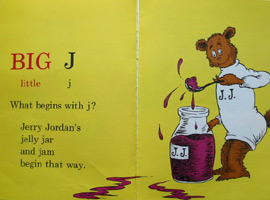 Another technique that is employed with more recent alphabet books is the use of humorous rhyming alliteration. Dr. Seuss's ABC is an excellent representation of this particular technique. Under the letter 'J' it says:
Another technique that is employed with more recent alphabet books is the use of humorous rhyming alliteration. Dr. Seuss's ABC is an excellent representation of this particular technique. Under the letter 'J' it says:
'What begins with J?
Jerry Jordan's
Jelly Jar
And Jam
Begin that way.'
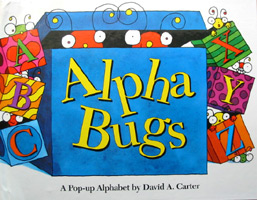 To make some ABC books more exciting and interactive, pop-ups and lift-the-flap moveable parts have been used in addition to colourful illustrations. Some pop-up alphabet books include: 'Lucie Attwell's ABC pop-up book'; 'Alpha Bugs' by David A. Carter and Derek Matthews' 'Pop-up ABC'.
To make some ABC books more exciting and interactive, pop-ups and lift-the-flap moveable parts have been used in addition to colourful illustrations. Some pop-up alphabet books include: 'Lucie Attwell's ABC pop-up book'; 'Alpha Bugs' by David A. Carter and Derek Matthews' 'Pop-up ABC'.
Many of today's ABC books use popular characters that children will recognize from television programmes or other books. The child can learn their alphabet along with their favourite characters!
In conclusion, although there have been many differing types of alphabet books over the years, there is still one common fact that all these books share. All of them were created for young children, as an educational aid to written text recognition, language and pronunciation.
Contributed by Joanne Hill
(Published on 1st Mar 2008 )


